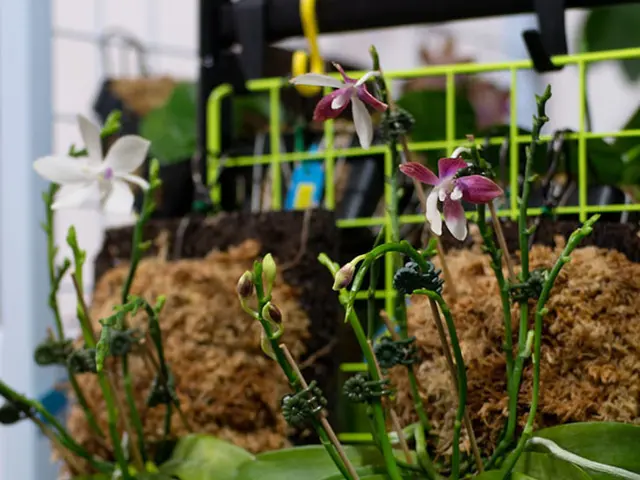Mystery Growth in Planter Pot: Identifying the Unseen Flora in Your Potted Plants
Identifying a White, Fuzzy Substance on Your Houseplants: A Guide to Saprophytic Fungus and its Prevention
A white, fuzzy layer on the surface of your houseplant's soil doesn't necessarily signal distress. It's likely to be a saprophytic fungus, a natural organic decomposition organism that plays a crucial role in nutrient cycling and soil health.
Saprophytic fungi are vital members of the largest group of fungi, responsible for breaking down organic matter and recycling essential nutrients, particularly nitrogen. They serve as "litter transformers" in nature, altering the chemical composition of decomposing matter into valuable nutrients for the soil and plants.
While saprophytic fungi are generally harmless and beneficial to the soil, their growth can become problematic in certain conditions. Houseplants thrive best in well-aerated, well-drained soil with ample sunlight. Poor watering practices, inadequate light, and insufficient air circulation can encourage the growth of mould or other types of saprophytic fungi on the plant's soil.
To address the presence of saprophytic fungi in your houseplants:
- Ensure Proper Watering:
Overwatering is one of the primary causes of mould growth. Test the soil moisture levels before watering and avoid watering when the top few inches are still moist. It's essential to allow the soil to dry between watering sessions.
- Improve Drainage and Aeration:
Using a potting mix with ingredients like perlite or sand can improve drainage and help prevent moisture build-up. Consider switching to a well-draining mix if your current soil retains too much water.
- Promote Good Airflow and Light:
Place your houseplants in areas with good air circulation to prevent moisture accumulation. Indirect sunlight is ideal as it reduces the risk of mould growth.
- Select Appropriate Containers:
Pots with multiple drainage holes can help prevent waterlogging and other issues caused by excess moisture.
- Cinnamon as a Natural Fungicide:
If you suspect a mould infestation, cinnamon powder added to the soil may help due to its antifungal properties. Sprinkle a thin layer of cinnamon over the affected area for a one-time treatment.
In long-term prevention strategies, regularly inspect your houseplants for signs of mould or root rot. If a fungus problem persists even after initial treatment, refresh the potting mix to maintain a healthy soil environment for your plants.
Addinga home-and-garden twist to your lifestyle, maintaining a balanced "lifestyle" in caring for houseplants is crucial. By adhering to proper watering schedules, ensuring good drainage, improving airflow and light, selecting appropriate containers, and utilizing natural fungicides like cinnamon, you can prevent saprophytic fungi from becoming problematic and maintain a healthy, thriving garden within your home.







